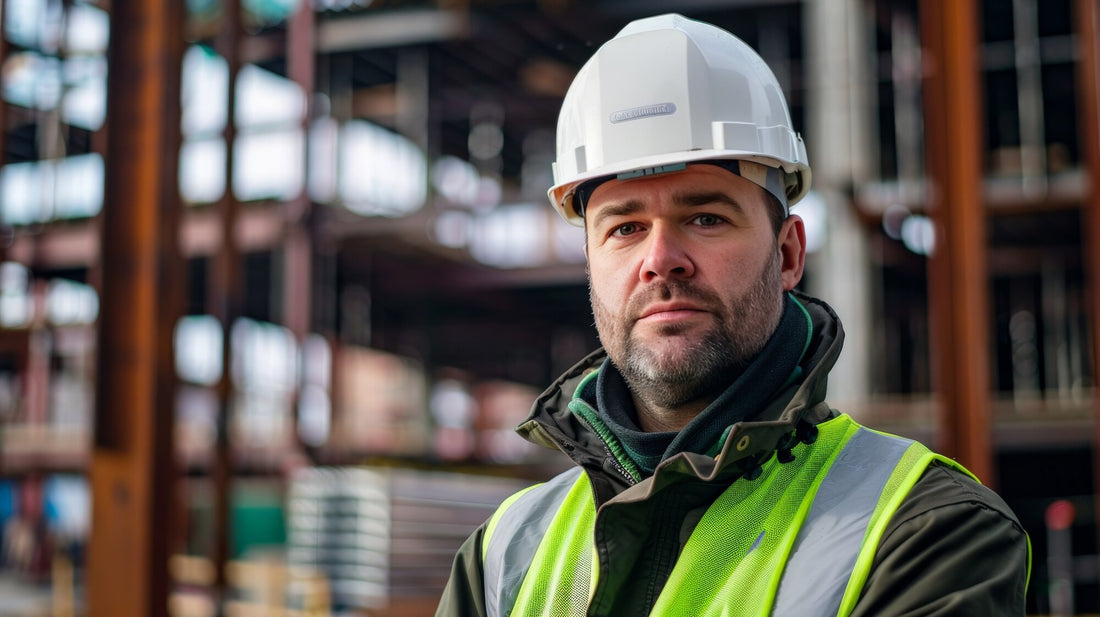
The Ultimate Guide to FR Hi-Vis Hoodies & Vests: Stay Safe and Seen
Share
High-visibility (hi-vis) clothing, like hi-vis hoodies and safety vests, plays a crucial role in keeping workers safe in hazardous environments. Beyond just being seen, hi-vis gear often incorporates flame-resistant (FR) properties, providing added protection in industries where fire risks are present. This guide delves into the importance of FR hi-vis garments, addressing key questions and ensuring you make informed decisions for your team's safety.
Understanding Hi-Vis Gear: A Quick Guide
Do Safety Vest Colors Mean Anything?
Absolutely! The color of safety vests is more than just a style choice—it helps enhance visibility and identify workers in different roles. Typically, you’ll see:
- Yellow vests worn by general laborers and traffic control personnel.
- Orange vests used by higher-risk roles such as emergency responders or road workers.
Each color has a specific purpose, ensuring that workers are easily identifiable, even from a distance. Find out more about safety vest color meanings here.
What Are OSHA and ANSI Approved Hi-Vis Colors?
Both the Occupational Safety and Health Administration (OSHA) and American National Standards Institute (ANSI) require certain colors to be used for high-visibility safety gear. Yellow-green, orange, and red are the three OSHA-approved hi-vis colors. ANSI standards also recognize blue and violet as additional options for specific industries.
Need to know more about OSHA and ANSI guidelines for Hi-Vis apparel?
Visit the OSHA Standard Interpretations and ANSI/ISEA 107-2020 Made Easier: A Quick Reference to the High-Visibility Safety Apparel Standard for detailed information.
What’s the Difference Between Class 1, 2, and 3 Safety Vests?
The main difference between Class 1, Class 2, and Class 3 safety vests lies in their visibility levels and the amount of reflective material used. Here’s a breakdown:
- Class 1 vests: Suitable for low-risk environments, like parking attendants or warehouse workers.
- Class 2 vests: Ideal for medium-risk environments, such as road construction or survey work.
- Class 3 vests: Required for high-risk environments, such as highways, where workers are exposed to traffic moving faster than 50 mph.
Explore which safety vest class is best for your job by looking at our collection here.
What Defines a Class 2 Vest?
A Class 2 vest is designed for moderate-risk environments. It features 775 square inches of high-visibility material and reflective tape. These vests are used where workers face greater danger from moving vehicles and equipment, but they still need freedom of movement.
What Defines a Class 3 Vest?
A Class 3 vest offers the highest level of visibility and protection, with a minimum of 1,240 square inches of high-visibility material and extensive reflective tape, often including coverage on the arms and legs. These vests are typically worn by highway workers, tow truck operators, and others in high-speed or heavy traffic areas.
The Importance of FR Properties in Hi-Vis Gear
In industries where fire hazards are present, flame-resistant (FR) hi-vis garments provide added protection. FR fabrics are treated to resist ignition and minimize heat transfer, reducing the risk of severe burns in case of a fire.
Key benefits of FR hi-vis gear:
- Enhanced safety: FR properties provide an extra layer of protection in hazardous environments.
- Compliance with regulations: Many industries require FR workwear to meet safety standards.
- Peace of mind: Knowing your team is wearing FR hi-vis gear can provide reassurance and reduce stress.
Why Wear a Hi-Vis Safety Vest?
A hi-vis safety vest significantly reduces the risk of accidents. Whether you're on a construction site, an oil rig, a roadside, or in a warehouse, being visible to drivers, equipment operators, and co-workers is crucial to your safety.
Hi-Vis Hoodies: The Perfect Blend of Comfort and Safety
If you're working in colder conditions, hi-vis hoodies offer the perfect solution for staying both visible and warm. These hoodies are made from high-visibility fabric and often include reflective elements, making them ideal for workers in cool or hazardous environments.
Explore our range of hi-vis hoodies and how they can keep you safe and comfortable here.
Who Should Wear Hi-Vis?
Hi-vis clothing is required for anyone working in high-risk environments, such as construction, road maintenance, or warehouse operations. If there’s even a slight chance that visibility could prevent accidents, hi-vis clothing is necessary.
How Effective Is Hi-Vis Clothing?
Hi-vis clothing has been shown to significantly reduce accidents. Studies indicate that wearing hi-vis gear can decrease the likelihood of an incident by up to 50% in high-risk environments.
Learn more about the effectiveness of hi-vis clothing here.
Can Hi-Vis Go in the Dryer?
Yes, but always follow the care instructions on your hi-vis garments. Using a low-heat setting will help preserve the reflective materials and flame-resistant properties, ensuring your hi-vis gear stays effective for as long as possible. Always follow the care label instructions to avoid shrinking or damaging the fabric.
Read more about how to care for your FR clothing here.
Fireball Safety Workwear: Committed to Your Safety
Hi-vis hoodies and vests are vital for keeping workers safe in various industries. By choosing FR hi-vis gear, you're not only ensuring visibility but also providing an extra layer of protection in hazardous environments. Understanding the differences between Class 1, 2, and 3 safety vests, the significance of OSHA-approved colors, and the rules for FR safety gear will help you make the best decisions for your team’s safety.
Explore our full range of hi-vis FR hoodies and safety vests today!